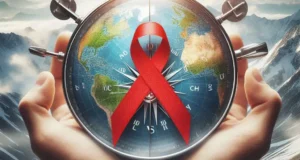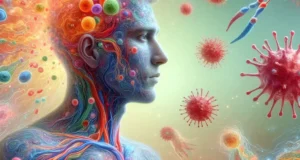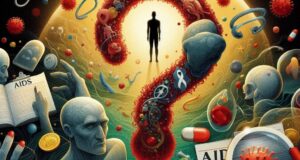Picture a grand mystery that has gripped the world—a deadly illness creeping silently across borders, taking lives without explanation. Doctors are baffled, scientists are racing, and humanity is desperate for answers. In this real-life thriller, one man steps into the lab like a seasoned detective stepping onto a crime scene. His name? Dr. Robert Gallo. His mission? To identify the invisible killer behind a disease that would soon be called AIDS.

In the early 1980s, as the world began asking, “AIDS, where did it come from?”, Gallo was already deep in the chase. A renowned American biomedical researcher working at the National Cancer Institute, he had been studying retroviruses—a rare class of viruses that integrate into their host’s DNA. His earlier discovery of the first human retrovirus (HTLV-I) gave him a head start in tackling the growing AIDS mystery.
AIDS—Acquired Immunodeficiency Syndrome—was unlike anything medicine had seen. It was not caused by a bacteria, fungus, or known virus. People were dying not from a single disease, but from their immune systems being completely dismantled. It was as if their biological security systems had vanished. Scientists worldwide were scrambling, and the world kept asking: AIDS, where did it come from?
Dr. Gallo’s lab became a hub of activity. Drawing on his knowledge of retroviruses, he theorized that AIDS might be caused by a similar type of virus—one that infects immune cells and gradually destroys them. In 1984, Gallo and his team announced a monumental discovery: they had identified a virus, which they named HTLV-III, as the probable cause of AIDS. Around the same time, French scientists at the Pasteur Institute had discovered a similar virus, which they called LAV. It was eventually confirmed that both groups had found the same culprit—now universally known as HIV (Human Immunodeficiency Virus).
This discovery was more than just a scientific breakthrough—it was a turning point in history. Knowing what caused AIDS meant we could begin testing for it, monitoring its spread, and eventually developing treatments. Gallo’s work didn’t just solve a puzzle—it helped millions of people find hope.

Let’s break it down with a metaphor: Imagine a house on fire, but no one knows what’s causing the flames. Gallo was the one who found the faulty wiring deep inside the walls—the virus hiding in the bloodstream. He didn’t just point to the fire; he identified its source and showed the world how to start fighting it.
The identification of HIV answered, in part, the looming question: AIDS, where did it come from? With the virus named and understood, researchers could trace its history. They discovered that HIV originated from a similar virus in chimpanzees (SIV), likely transferred to humans in Central Africa during the early 20th century. For decades, the virus spread quietly before exploding into a global epidemic by the 1980s.
Although controversies and rivalries surrounded Gallo’s claim to discovery—especially involving the French researchers—the scientific community eventually credited both parties. Gallo, despite the debates, is undeniably a central figure in the unraveling of AIDS.
To this day, Dr. Gallo continues to work in virology and public health. He co-founded the Institute of Human Virology and remains a passionate voice in AIDS research. His early efforts shaped the global response to one of the most terrifying health crises of our time.
So, when we revisit the question “AIDS, where did it come from?”, we must also remember who first gave us the map to follow. Robert Gallo didn’t just find the virus—he lit the path toward understanding it. In the story of AIDS, he remains one of the pivotal figures who helped transform panic into progress, confusion into clarity, and fear into focused action.




